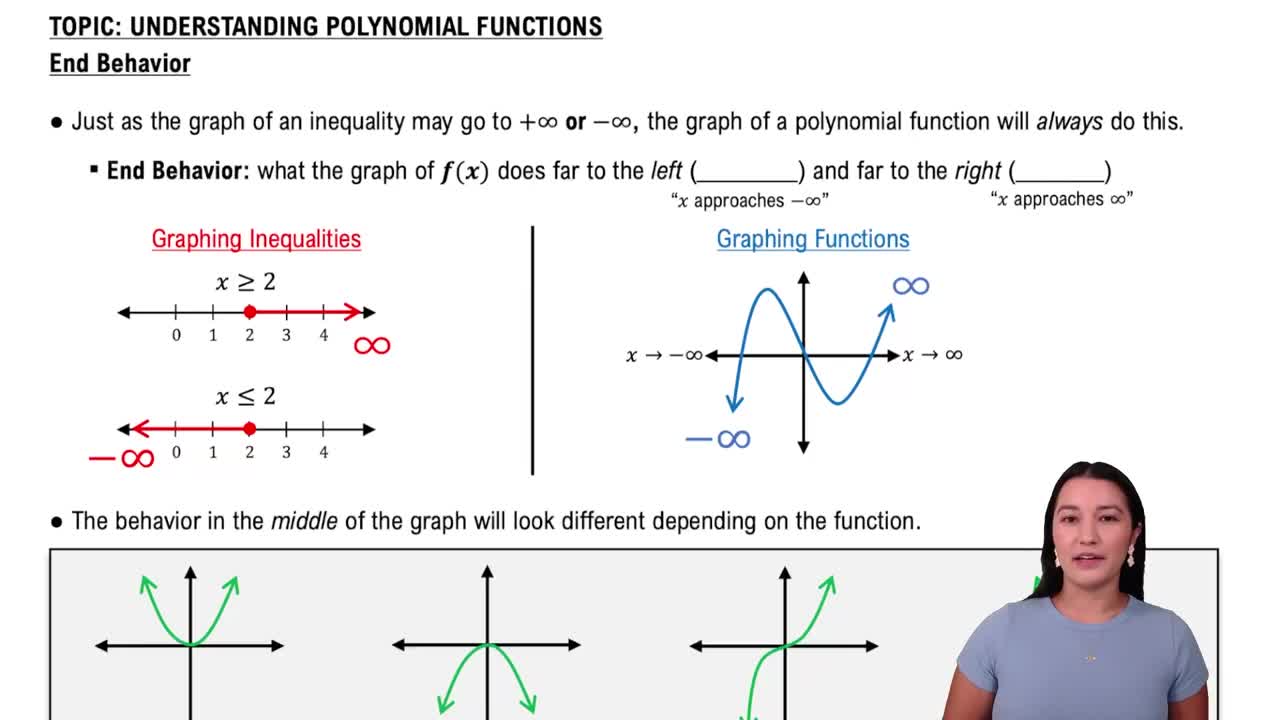Here are the essential concepts you must grasp in order to answer the question correctly.
Rational Functions
A rational function is a function represented by the ratio of two polynomials. The general form is f(x) = P(x)/Q(x), where P and Q are polynomials. Understanding rational functions is crucial for analyzing their behavior, including identifying asymptotes and intercepts, which are key to interpreting their graphs.
Recommended video:
Intro to Rational Functions
Asymptotes
Asymptotes are lines that the graph of a function approaches but never touches. Vertical asymptotes occur where the function is undefined, typically where the denominator equals zero, while horizontal asymptotes indicate the behavior of the function as x approaches infinity or negative infinity. In this case, the horizontal asymptote at y=0 suggests that as x approaches negative infinity, f(x) approaches 0.
Recommended video:
Introduction to Asymptotes
End Behavior of Functions
The end behavior of a function describes how the function behaves as the input values approach positive or negative infinity. For rational functions, this behavior is often determined by the degrees of the numerator and denominator polynomials. In this case, as x approaches negative infinity, the function approaches the horizontal asymptote, indicating that f(x) approaches 0.
Recommended video:
End Behavior of Polynomial Functions

 Verified step by step guidance
Verified step by step guidance Verified Solution
Verified Solution



 6:24m
6:24m